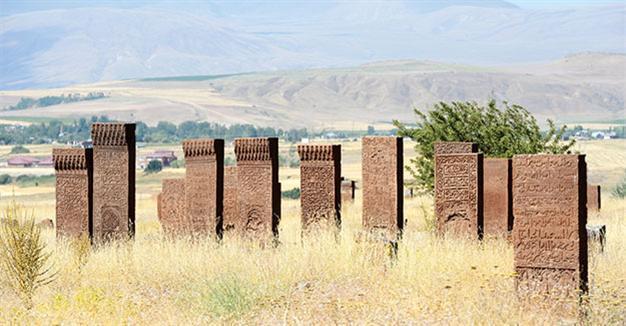Underground artifacts in Seljuk graveyard to be unearthed
BİTLİS – Anadolu Agency

AA photo
Geophysical works have been continuing in the world’s largest Islamic graveyard, the Seljuk graveyard in the eastern province of Bitlis’ Ahlat district, known as the entrance gate of Anatolia.Prepared by the Bitlis Eren Universiy (BEU) and financed by the Eastern Anatolian Development Agency, the project titled “Research on the World Heritage Seljuk Graveyards and Domes” aims to determine the underground artifacts in Seljuk graveyards.
BEU Deputy Rector and Faculty of Engineering member Prof. Aydın Büyüksaraç said they were carrying our geophysical work in the graveyard within the scope of the project.
He said that the graveyard had been used by the Seljuks as a burial place from 1040 to the final era of the Ottomans, adding, “Currently the field is home to nearly 6,200 graves. Most of them can be seen on the surface. The excavation team, led by Professor Recai Karahan, is working here every year. As the geophysical team, we try to find the graveyard ruins underground. We have so far worked on an area of 25,000 square meters on the surface without excavations or damaging any find.”
Symbol of Turks’ entering Anatolia
Büyüksaraç said they would survey 12 domes in the second stage of the work, adding that all these activities would be carried out without damaging the domes or taking any samples.
In this way, he said, the domes would be preserved, adding, “These artifacts will be protected from any risk of getting lost and other effects.”
Büyüksaraç said the Ahlat Seljuk graveyard was a very important field, adding:
“Because the Seljuk graveyard is a symbol of Turks’ entering Anatolia. Burial operations started here in 1040. It shows that Turks settled here before the Battle of Manzikert in 1071. It is known that the population increased to 300,000 after the Seljuks moved to this region. Later on, the population decreased to 10,000 in this region because of some natural disasters like earthquakes and epidemic diseases.”
The geophysical works in the graveyard will be evaluated in detail and used for future works.
He said that since it was an archaeological site, the graveyard was surrounded with walls, and continued:
“We have found new grave ruins outside of the walls. We need to conduct more detailed works to get final results, the real number of burials. They will be brought to the surface during excavations and we will be able to understand the dimension of the past civilization in this field.”
As important as Çanakkale Martyrdom
Büyüksaraç said the Seljuk graveyard was as important as the cemeteries surrounding the Çanakkale Martyrs’ Memorial site. He said that Çanakkale received some 5 million visitors a year, adding, “We can say that the Ahlat Seljuk graveyard is the Çanakkale of the east. The difference between the two is 900 years.
These lands have been defended for 900 years and the graveyards are the symbols of this defense. Not only graves but also ruins from the Urartian era were found underground. The field is very attractive since it is on the coast of Lake Van.”
















